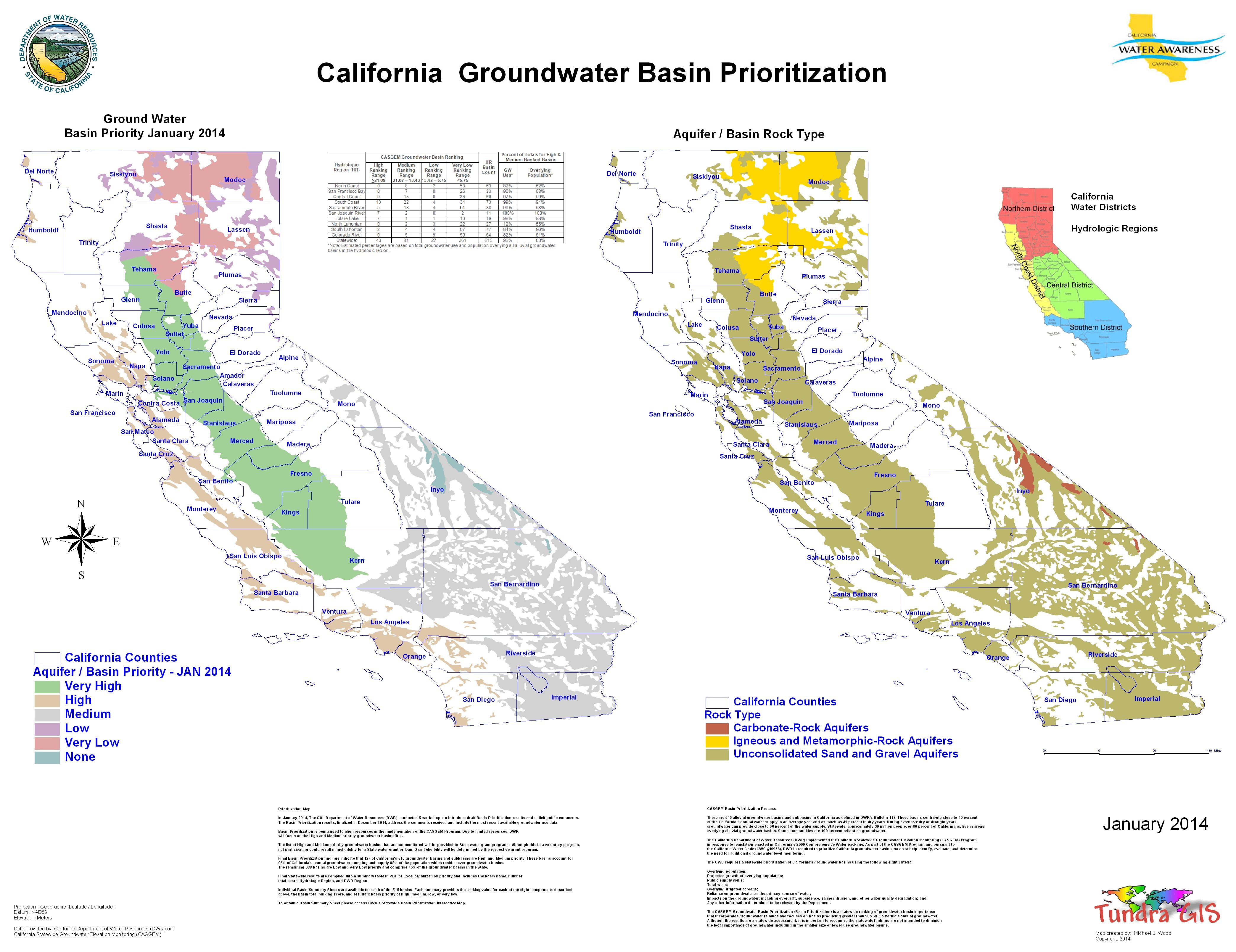 |
|
|
|
|
| Map Gallery Slide Show | Image 39 of 75 | CA Groundwater Basin Prioritization |
 |
||
| CA Groundwater Basin Prioritization - Aquifers and Rock Type Map | ||
The Department of Water Resources (DWR) is implementing the 2009 Groundwater Monitoring legislation under the California Statewide Groundwater Elevation Monitoring Program. The overall purpose is to establish a permanent, locally managed program of regular and systematic groundwater level monitoring to track seasonal and long-term trends in groundwater elevations in all of California's 515 alluvial groundwater basins and to make this information readily available to the public. Groundwater basins and subbasins are defined as the 515 alluvial basins or subbasin (basins) outlined in DWR’s California’s Groundwater, Bulletin 118, Update 2003. As part of the Program legislation, and pursuant to the CWC §10933, DWR is required to prioritize California groundwater basins, so as to help identify, evaluate, and determine the need for additional groundwater level monitoring. The CWC directs DWR to consider, to the extent available, all of the data components listed below. 1. The population overlying the basin, 2. The rate of current and projected growth of the population overlying the basin, 3. The number of public supply wells that draw from the basin, 4. The total number of wells that draw from the basin, 5. The irrigated acreage overlying the basin, 6. The degree to which persons overlying the basin rely on groundwater as their primary source of water, 7. Any documented impacts on the groundwater within the basin, including overdraft, subsidence, saline intrusion, and other water quality degradation, and 8. Any other information determined to be relevant by the department. This report provides an overview of the groundwater basin prioritization results, an explanation of how the basin prioritization results may be used, and a summary of the rationale used in the development of the basin prioritization, based on the eight data components listed above. |
||
| CLICK HERE TO DOWNLOAD | ||
| < back | up ^ | next > |